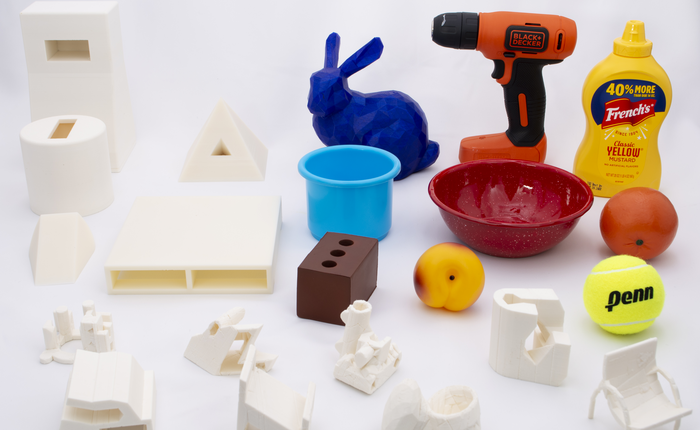New Tool can Design 3D Robot Grippers for Nearly Any Object
Today, assembly line robots are difficult to transition to other tasks. During the COVID-19 pandemic, when car manufacturing companies shifted their production from cars to PPE, they relied on people to man assembly lines. A team from Washington University may be changing that. They will present their findings at SIGGRAPH 2022.
Currently, robots use passive grippers to pick up objects. These grippers cannot change shape or conform to the items they are manipulating. The team developed a tool to design a 3D-printable passive gripper and calculate the best path to pick up an object. They tested their device on 22 objects, including a 3D printed bunny, a wedge, a pyramid shape with a keyhole, a tennis ball, and a drill. The designed grippers successfully managed 20 of the 22 objects, although they had trouble with the pyramid and wedge.
“We still produce most of our items with assembly lines, which are really great but also very rigid. The pandemic showed us that we need to have a way to easily repurpose these production lines,” said senior author Adriana Schulz, a UW assistant professor in the Paul G. Allen School of Computer Science & Engineering. “Our idea is to create custom tooling for these manufacturing lines. That gives us a very simple robot that can do one task with a specific gripper. And then when I change the task, I just replace the gripper.”
Every object has multiple possibilities for gripper shape. That shape is also connected to the robot’s path to manipulate the object—the points where the gripper contacts the object are crucial for maintaining grasp stability. The researchers used this “grasp configuration” as part of their algorithm for the new tool.
“First our algorithm generates possible grasp configurations and ranks them based on stability and some other metrics,” Kodnongbua said. “Then it takes the best option and co-optimizes to find if an insert trajectory is possible. If it cannot find one, then it goes to the next grasp configuration on the list and tries to do the co-optimization again.”
Once the computer finds a good match, it outputs two sets of instructions: one for the 3D printer and the other for the robot arm’s trajectory.

